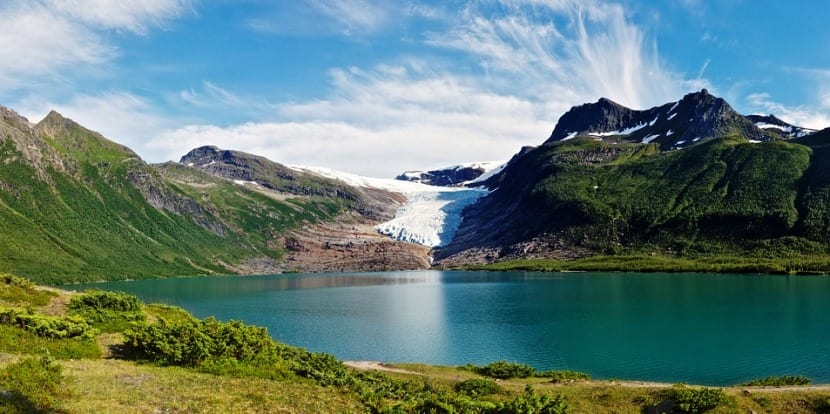
Those who travel to Norway will find impressive landscapes, with mountains that rise as far as the eye can see and incredible fjords, arms of the sea that reach ashore. But Beyond nature Norway is a country of interesting and striking customs, as well as a unique cultural heritage.
For many years Norway belonged to either the Danish or the Swedish crown, which has led Norwegians to defend their own identity very vehemently. They are very proud of their heritage and the dialects they speak. We have already given you some details about customs in this articleNow it is time to expand our knowledge of Norwegian society.
Protocol details
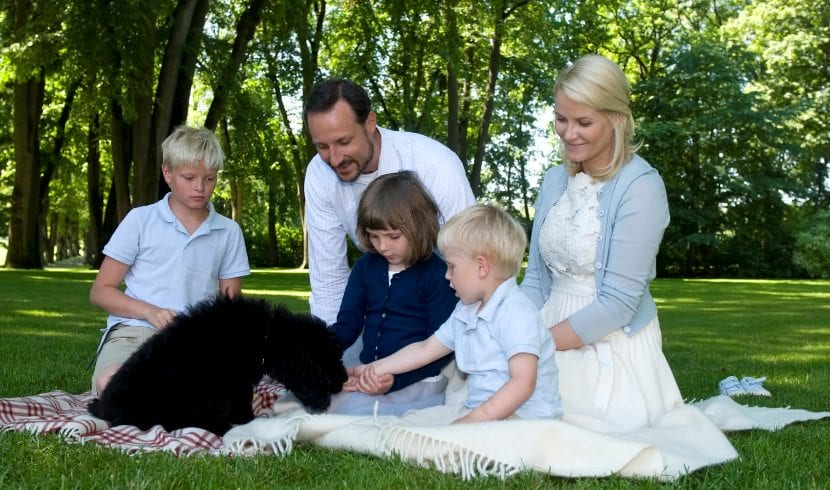
If you are going to greet a Norwegian, do so with a strong and fierce handshake, even if it is a woman, and if you are already confident, the best thing is a hug, but it is very rare that they greet each other by kissing on the cheek.
In norwegian The word please is almost never used, it is not a matter of education, it is simply not used, instead they are giving thanks all the time, takk!, that is used for everything.
Norwegians do not have an established protocol to speak according to what hierarchy, in fact they use the first name in any formal situation. For them the formalities are demonstrated by actions. Calmness, a low tone of voice and silence are highly appreciated virtues, not to be confused with a bad mood or sullen people, because in general they are not.
As if you were in japan, when they invite you to a house make sure to take off your shoes when you enter, so as not to damage the floors. If you do not want to stay in socks and without shoes, the host will give you some indoor shoes.
Constitution Day or National Day
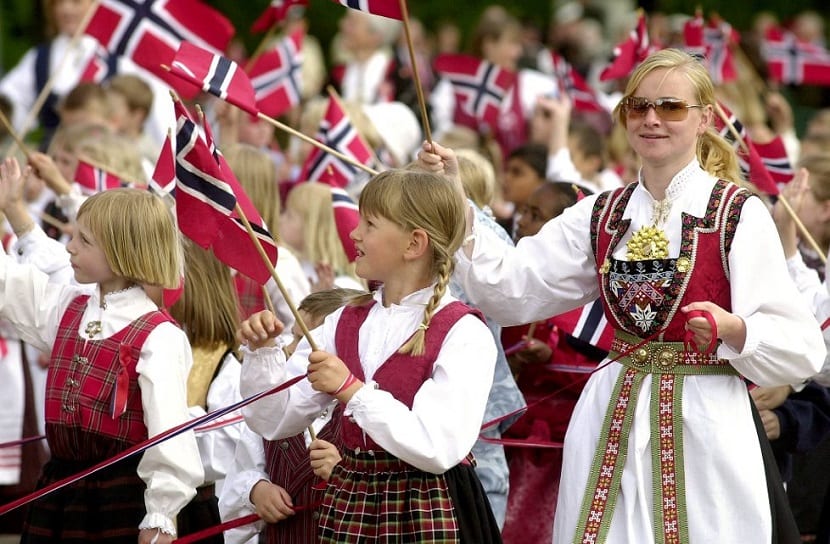
Constitution Day is the great day of Norway, celebrated on May 17 in commemoration of the signing of the Magna Carta of 1814.
Before going out to the streets to see the parades, which are not military, but for children and young people, it is customary to stay for breakfast with friends and family. And then to see the parade. Children's parades take place throughout the country, and are led by marching bands that march through their towns and cities, but obviously the most massive is that of Oslo, the capital, which is attended by the royal family.
If you are in norway that day you will have the opportunity to see people dressed in their bunadsRegional traditional, male and female costumes from Norway. There are many different ones, and according to their colors and styles they indicate their place of origin.
By the way, a curiosity, on this day the children are allowed to eat as much ice cream as they want or can… So you know how they foster their love for the Constitution from a young age!
The night of San Juan
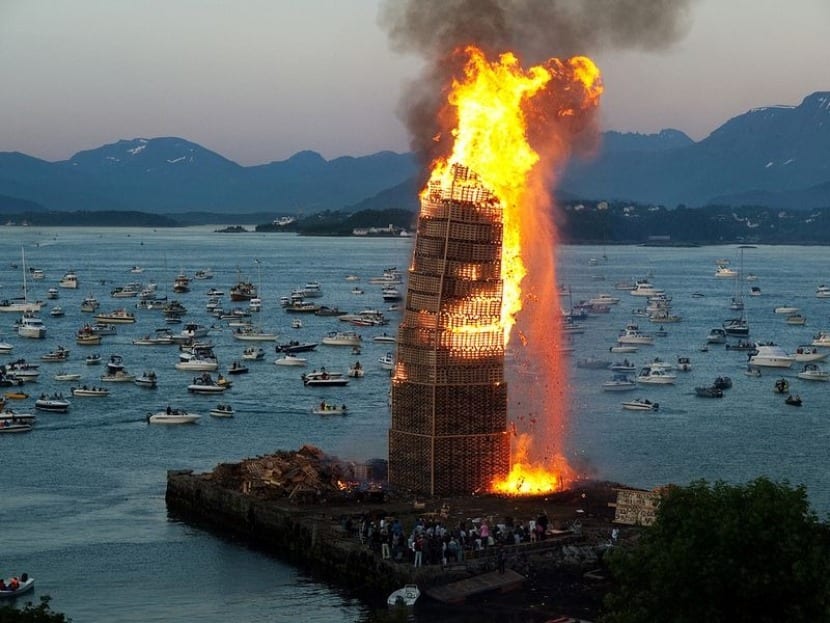
St. John's Eve o Jonsok which means John's awakening is celebrated in Norway on June 23, and it is related to the pagan summer solstice festival that occurs on June 21. Some call it Midtsommerfeiring, which means celebration in the middle of summer and on this night, as in many European countries, Norwegians gather with family and friends to dine together and light a bonfire. Bonfires are generally lit on the shores of beaches, lakes and rivers, and in some places false ones are celebrated marriages that symbolize the new life that the summer sun brings.
As you can imagine in a country as organized as Norway, nothing is left to chance and it is necessary to ask for permission to light the bonfires, which are granted to both private individuals and associations. Everyone has to comply with a series of rules such as having a fire extinguisher in case the fire gets out of control.
Since 2010 in Ålesund, the largest bonfire in all of Norway is built at 40,45 meters high.
Other important religious festivals on the national agenda are Saint Olav, patron saint of the country that is celebrated on July 29 and has its own pilgrimage route, and Saint Stephen's Day, December 26.
Courtship and weddings in Norway
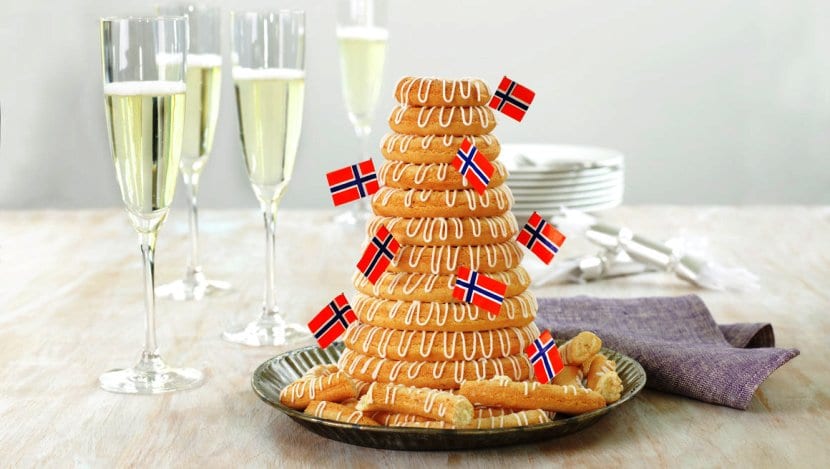
The courtship period in Norway was traditionally understood to be the time when the man showed the bride and her family that his intentions were serious. So during that time the groom used to give many gifts to the bride, and in return for her love she knitted socks and mittens for the entire family of her future husband.
On the wedding day, the bride and groom give each other gold or silver rings that represent the full circle of eternal love. And a curiosity is that the wedding procession when they go to the wedding venue is led by violinists, who play the traditional song, Come to the wedding.
During the party Speeches are super important and they dedicate a great deal of time to this, families, friends, guests and everyone who lends themselves wishes to take advantage of their traditional right to convey their thoughts about the couple.
The most traditional wedding cake is the kransekake, made of flour with a mixture of cream, cheese and syrup. By the way, the bride scores points if the beer served at the wedding has been made by herself.
With these details I hope I have helped you to know some customs and traditions of Norway, but if there is something that you should not talk about in this country, because they take it very seriously, it is the whaling issue and its participation in the Second World War, but stay with the best of Norwegians, who above all are great lovers of nature and outdoor sports.
Well .. I would like to know more about Norwegian Black metal and the way they combine their folklore with this music… Thank you
In Norway the typical thing that is eaten is smoked salmon in Catalan Salmo Fumat
I WOULD LIKE TO KNOW MORE ABOUT THE TRADITIONS OF NORWAY. BUT I LOVE THEM A LOT BYE
The good thing is that the quality of your vocabulary speaks for itself of the education of your grandparents, parents and yours
The good thing is that the quality of your vocabulary speaks for itself of the education of your grandparents, parents and yours